Play Kits: an hour in a box
Play kits build week after week, until you have a library of resources - made by your child - that she will be proud of, and want to revisit.
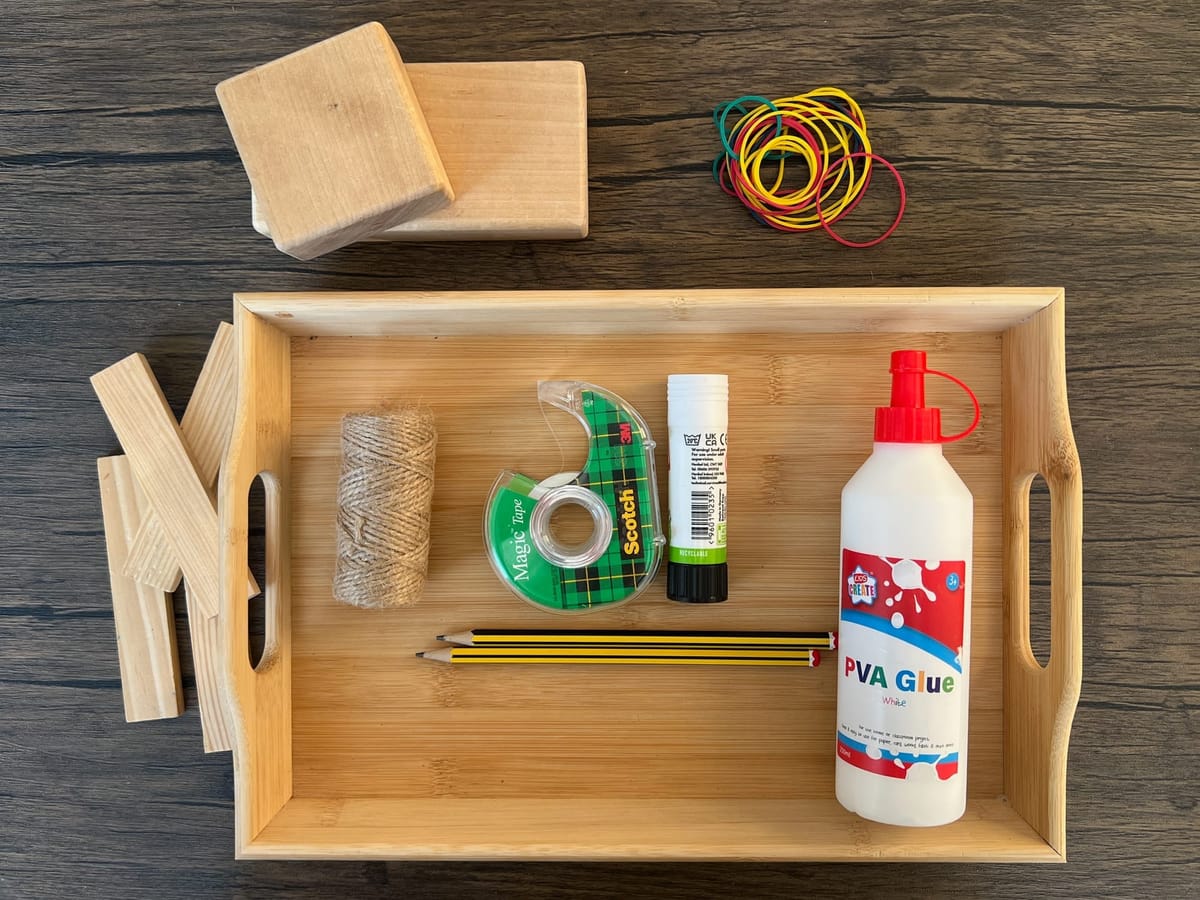
Have you ever bought one of those readymade “science kits”?
You know, the kind where you pay £15 for a two-inch plastic volcano and a tiny sheet of instructions telling you to “get some baking soda and vinegar from the cupboard.”
Really? That’s what I paid for?
You had such high hopes. There was the tantalising promise of something to delight - and occupy - your child for an entire afternoon. Plus, it’s STEM, so it must be educational, right? You hate screen time so much that you turn a blind eye to the cost, the effort, and the inevitable tears (because let’s be honest, these kits never work like they’re supposed to).
But instead of feeling triumphant, you’re left staring at a tiny plastic volcano and wondering:
There must be a better way.
And there is.
Play kits: simple, self-contained fun
Play kits are my answer to the disappointment of prepackaged kits and the guilt of constant screen time. They’re not flashy or complicated. In fact, they’re quite the opposite.
But, first, let’s look at exactly why the status quo doesn’t work.
A ‘cookbook’ for play
If you’ve ever eaten at one of Yotam Ottolenghi’s restaurants, you’ll know that the food is delicious.
But, unless you have an army of cooks to source and prepare the food, I don’t recommend buying the recipe book and trying to recreate the experience at home.
It just takes too long. And last time I checked I didn’t have any amchur (No? Me neither), black lime or tinned mango pulp. I don’t even know how to get them. And if, somehow, I did, they’d sit at the back of the cupboard until, sometime around my 70th birthday, I’d find them again, decades out of date. What do you cook with them?
I love his food but I’m never going to make it.
And so it is with play.
You are NOT invited to play
Those invitations to play you see all over Instagram and Pinterest look great, but who has the time?
Glass beads, pom-poms, coloured rice and a book full of beautiful illustrations leaning artfully against a vase of cut flowers from the meadow outside your back door. You do have a meadow, don’t you?

And you’ve got to be quick. The children are circling. You’ve got to fight them off before they start playing with it.
No! Not yet! I haven’t photographed it. Oh, look what you’ve done! You’ve ruined it!
Can I help, Daddy?
No. Yes. OK. Just stand there. Hold that wooden spoon in your hand and transfer those dried beans from this bowl to that one.
But, Dad, I’m ten! This is for babies.
Remind me, who was the invitation supposed to be for?
It looks nice but IT IS NEVER GOING TO HAPPEN.
And, in any case, what were you trying to achieve?
You’re undoubtedly a nicer person than I am. You were probably hoping for something educational.
Me? I’d take five minutes’ peace for a cup of tea.
Enter the Play Kit. My answer to your problems and mine.
Educational and engrossing. The holy grail.
But first, another digression…
My simple cookbook
I once had an idea for a recipe book. I was going to call it “Carrot, celery and onion.”
No, really.
As a child, I was exposed to a lot of Southern European cooking. One day, years later, I was preparing a meal for myself when I realised that almost everything I ever cooked started with a base of carrot, celery and onions. It was the foundation for everything.
Somehow, I made the connection with learning. Mastering the basics gives you the confidence and freedom to take risks and try new things.
Once you know what carrot, celery and onions taste like, once you understand how they affect the dish, it isn’t a great leap to imagine how the flavour will change if you add a tin of tomatoes.
And now that you have a basic tomato sauce, you can predict how it will taste with pasta or chicken, or diluted to make soup with a pinch of chilli flakes.
All those incremental discoveries eventually give you the confidence to make bolognese or lasagna.
Now you have a superpower. You can tell if you remembered to add the bay leaf by taste. You notice the difference a teaspoonful of sugar makes, counteracting the acidity of the cheap tinned tomatoes you were forced to buy because your favourite brand was sold out.
That was my idea for a cookbook. Learn a few basic concepts and experiment. Trust yourself to come up with something new by understanding how things go together.
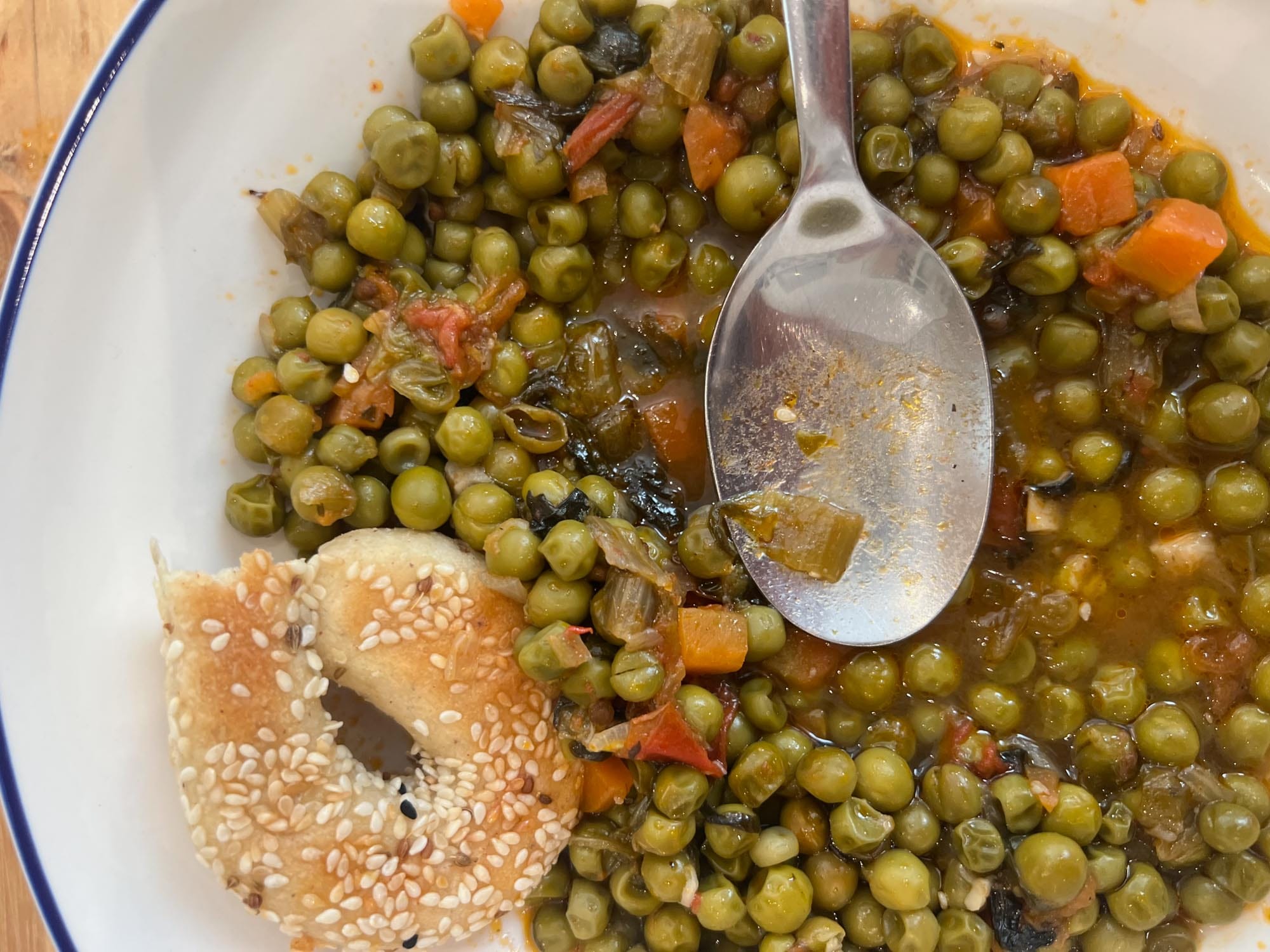
You can tell I’m not a food stylist - I forgot to remove the spoon! But the point stands. This is piselli, a peasant favourite from the Southern Med: Peas, carrots and onions. Replace the celery with lettuce and add tomatoes.
Delicious.
A play thesuarus
Carrots, celery and onion go together beautifully.
But how about carrots, celery and orange?
Niki Segnit's says ‘yes’.
In her brilliant book, The Flavour Thesaurus, she explains the science behind why unusual flavour combinations can work so well: think watermelon and oyster or lamb and apricot. She uses a kind of colour wheel to show you which food families complement and contrast. It’s a guide to developing intuition in cooking - helping readers break free from recipes and start experimenting with flavours confidently.
The Play Kits are about developing intuition in play, which comes from familiarity with the materials and what they can do.
This is going somewhere, I promise.
Ottolenghi, again
The Ottolenghi cookbook is just too complicated for most of us. It’s not that we don’t have the ingredients or the time or the money. There’s simply too much going on. Ottolenghi is a genius - but we’re still getting to grips with frying an onion.
Invitations to play are like giving your child Ottolenghi’s Jerusalem. She won’t know what do with it. Worse, she’ll need you to shop for the ingredients, chop it all up and then stand dutifully at the stove while it cooks.
What is a Play Kit?
Play Kits, by contrast, are the carrots, celery and onion.
They’re the apple your child helps herself to from the fruit bowl. Just as nutritious but requiring almost no work from you .
They are self-contained boxes, trays, or bags filled with thoughtfully chosen materials for an activity your child can pick up and dive into independently. They’re designed to engage her deeply, build essential skills, and, crucially, save you time and effort.
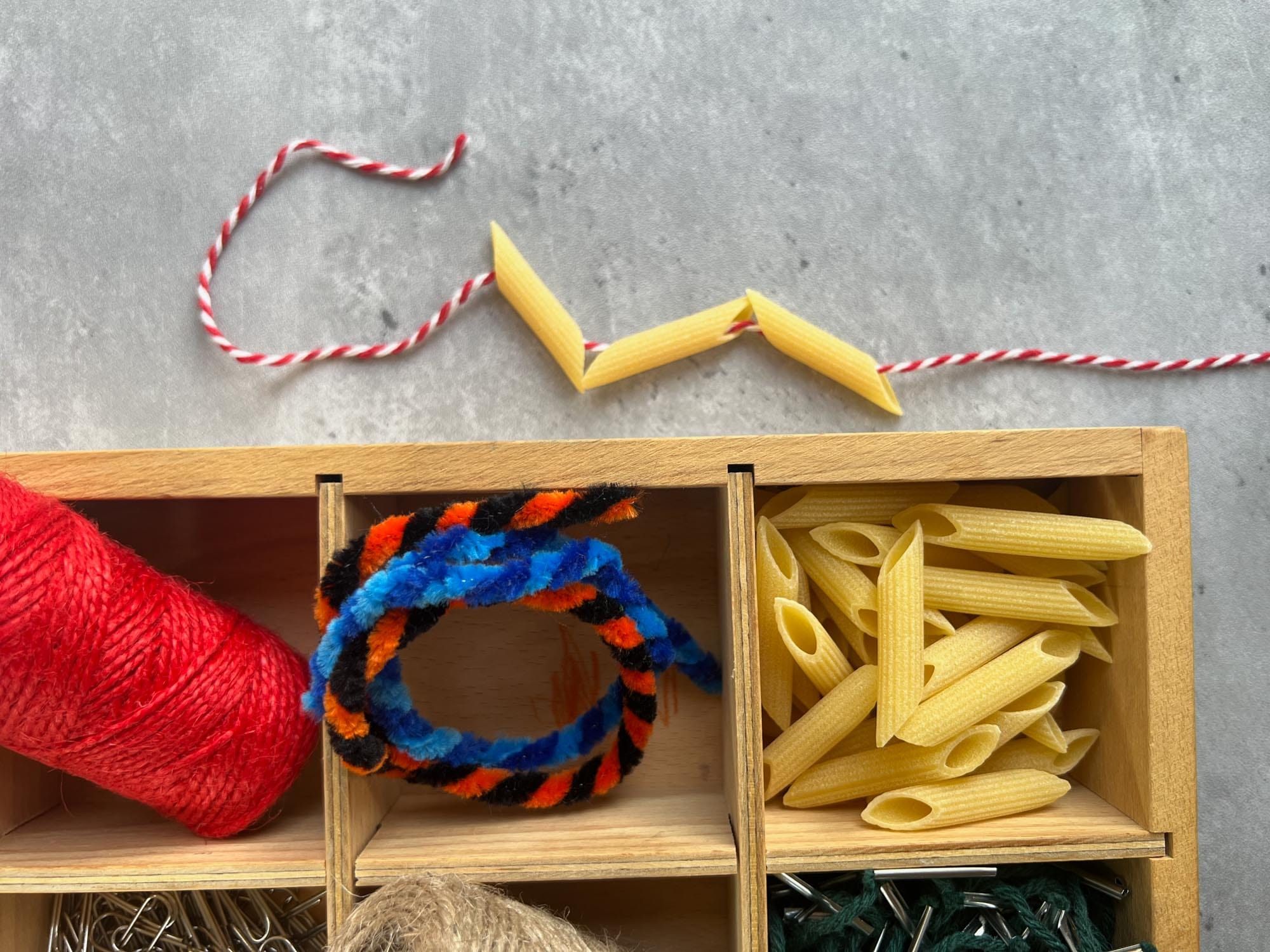
They start off easy but what makes them special is that you add something interesting each week until your child is cooking Coconut and tahini green goddess with sunflower seed dukkah.
Or, rather, she is building something fun and exciting from everyday objects you already have at home. It could be needlework, a junk model, or a ’brother’ alarm for her bedroom door using simple electronics.
📌 A self-contained box, tray, or bag with everything your child needs to start playing.
📌 Designed for independent, open-ended play (no step-by-step instructions!).
📌 Something that grows over time - each week, you can add a new tool, material, or challenge.
📌 Based on your child’s interests, so she keeps coming back.
How Montessori trays inspired the idea
The idea for play kits started with a revelation I had after watching my children enjoy Montessori activities at their preschool.
I don’t have any ‘official’ Montessori materials at home, so here’s an approximation.
Your child is interested in transferring materials from one pot to another so she goes to the shelf and takes out the corresponding tray.
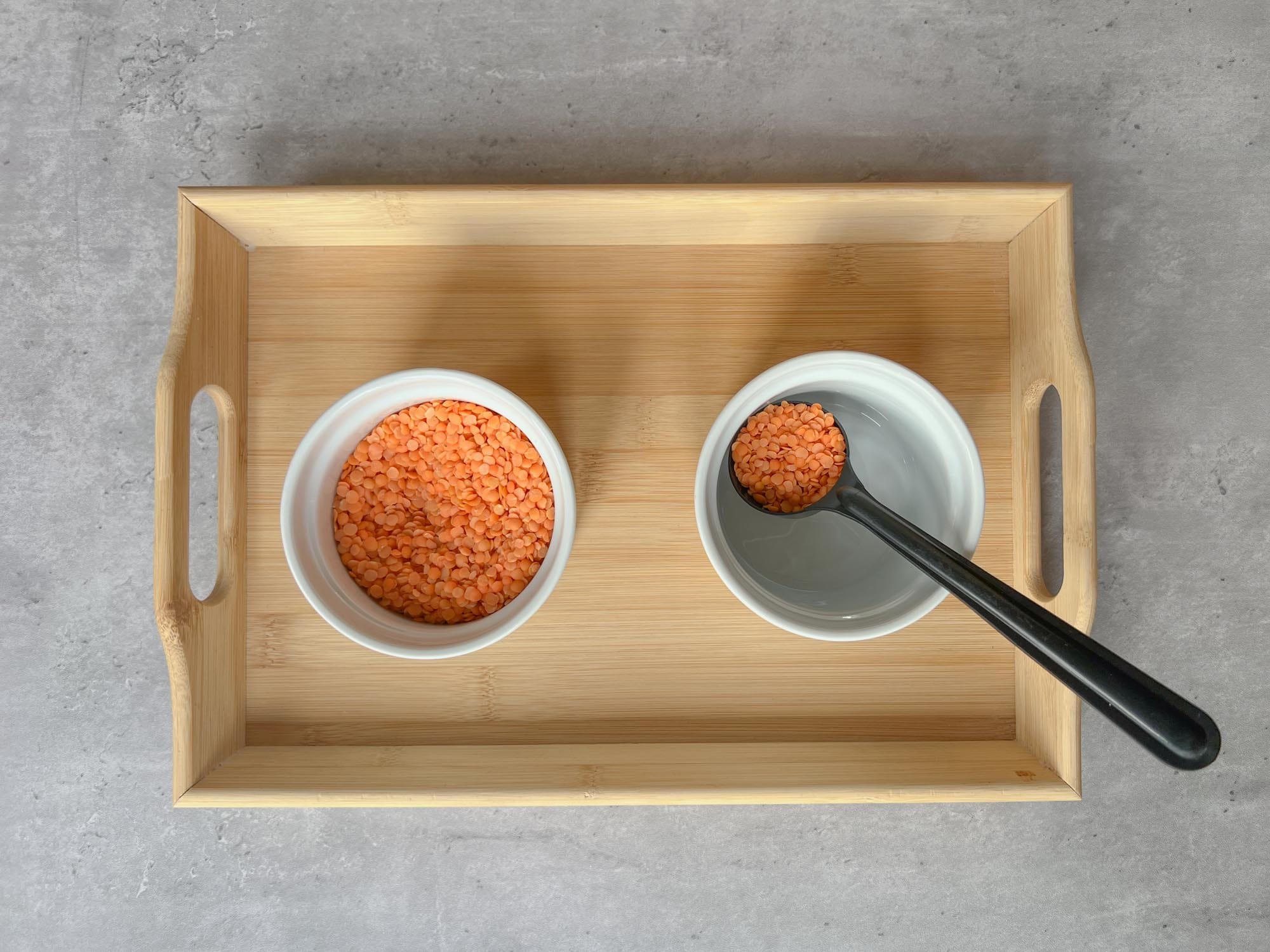
Such a simple activity, but there is so much going on. The tray contains everything she needs to master the relevant skills. Through practise, she develops fine motor control, hand-eye coordination and concentration. And, over time, the challenge can be increased. Use tongs or tweezers rather than a scoop or transfer water rather than lentils, perhaps with a spoon or pipette. Each variation introduces a subtle new demand and so your child’s competence - and confidence grows.
This is the magic of a well-organised, intentional setup. The tray doesn’t just hold materials - it’s a tool for independence, focus, and success.
It’s a brilliant idea, but good luck getting your school-age child to try it.
For the over 5s, Montessori trays are too limited. They focus on discrete skills.
But your child has mastered them. She is ready for a challenge, something that captures her imagination and holds it for days and weeks rather than minutes.
She is ready for Play Kits.
My 10-year-old son’s Play Kits
Here’s how your Play Kits might look in practice. I don’t lead an Instagram life. With four children, things get messy. And I don’t want to present you with an impossible ideal. Play Kits should work for you, they should make your life easier, or there’s no point having them.
Here’s the storage unit in my second son's bedroom.
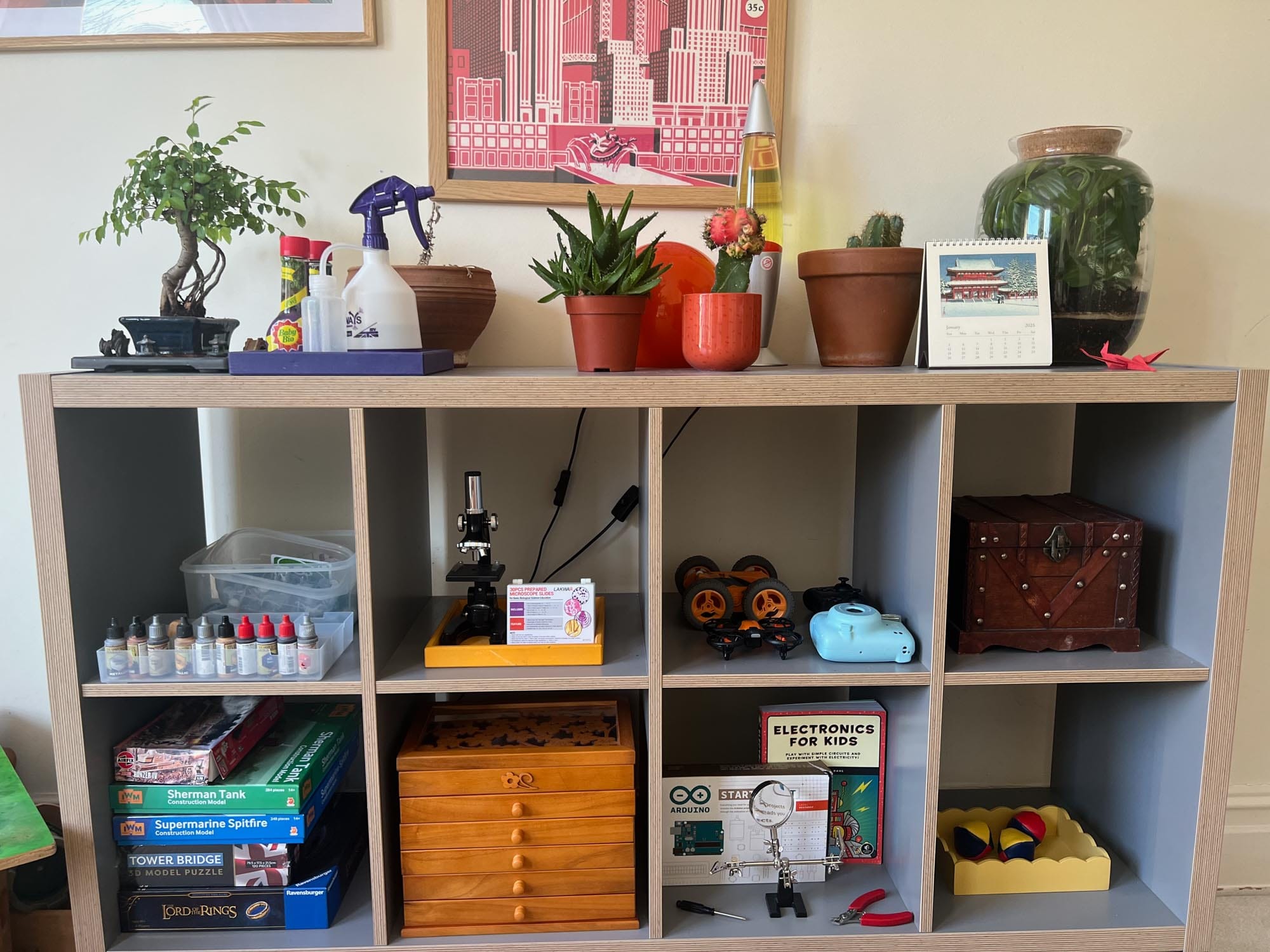
As you can see, the Play Kits can all be found in various trays and boxes. Nothing matches. It’s not especially tidy.
But it’s bursting with possibilities.
A growing kit. He has cacti, succulents, a terrarium and a bonsai tree. The plant behind the spray bottle withered and my son was beside himself with worry as he watched it die. Using the calendar (top right), he had carefully created a feeding and watering schedule. All to no avail. So he researched and added to his kit: specialist food for each type of plant; spray to keep delicate leaves moist; and a change of location to escape the shrivelling heat of a nearby radiator. A cutting from the succulent was saved and the adventure continued.
Before long, he started to wonder about growing things outside, ‘real’ plants.
I want to grow tomatoes from seed.
And so another side-project was born.
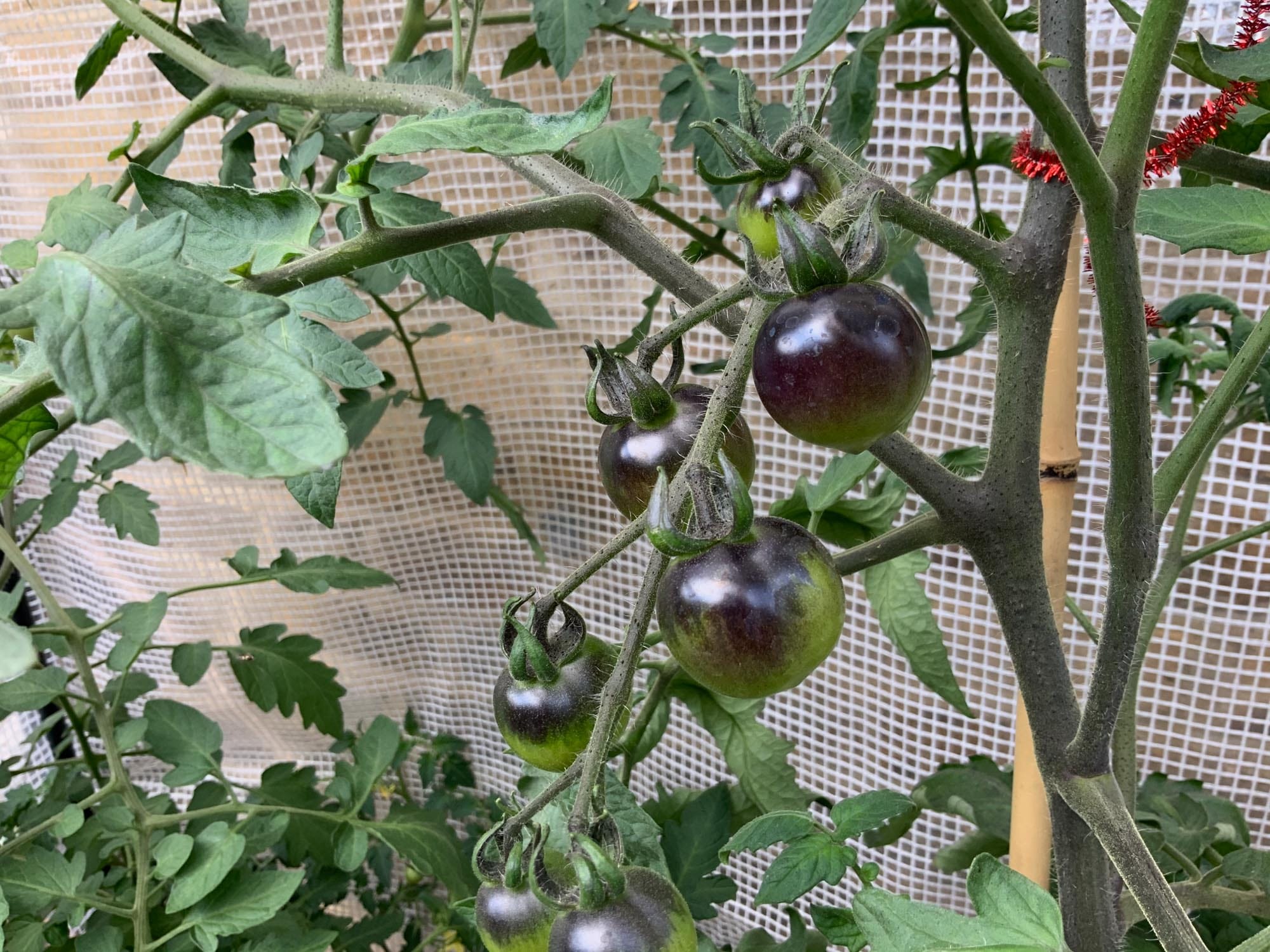
And, at the end of the season, he harvested the crop. After enjoying the fruits of his labours, he scooped out the seeds and dried them, ready to plant in the spring.
Every day last autumn, his first thought on coming through the door was to go outside and check on his plants. For those warm, sunny evenings, screens didn’t exist.
A modelling kit. A modelling kit. To make scenery for his wargaming board, he has a kit full to the brim with putty, gravel, fake trees and fake grass. Over time he has added glue, pliers and a set of washes and paints.
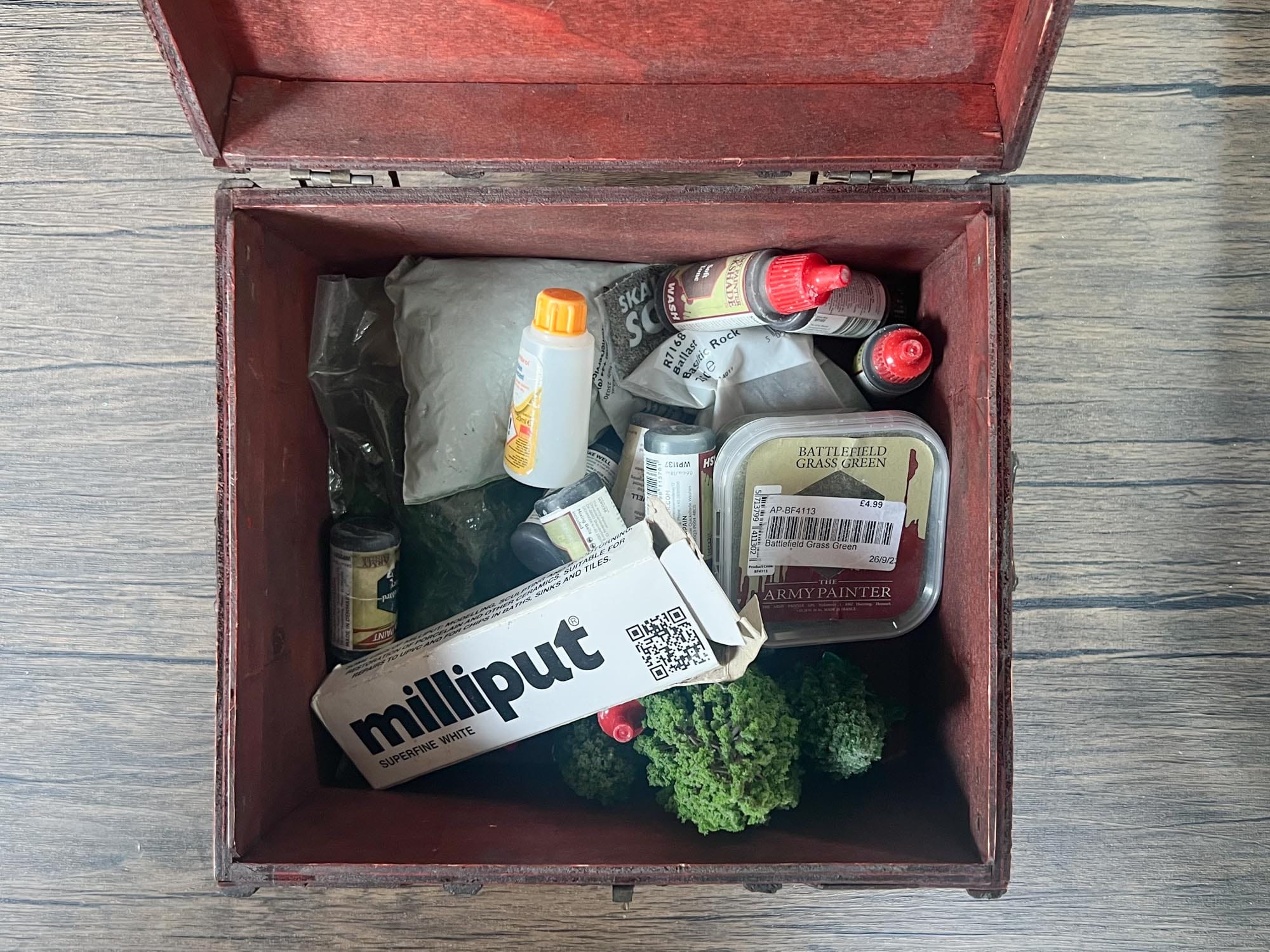
Miniatures. Once you’ve made a wargaming board, you need figures for your battles.
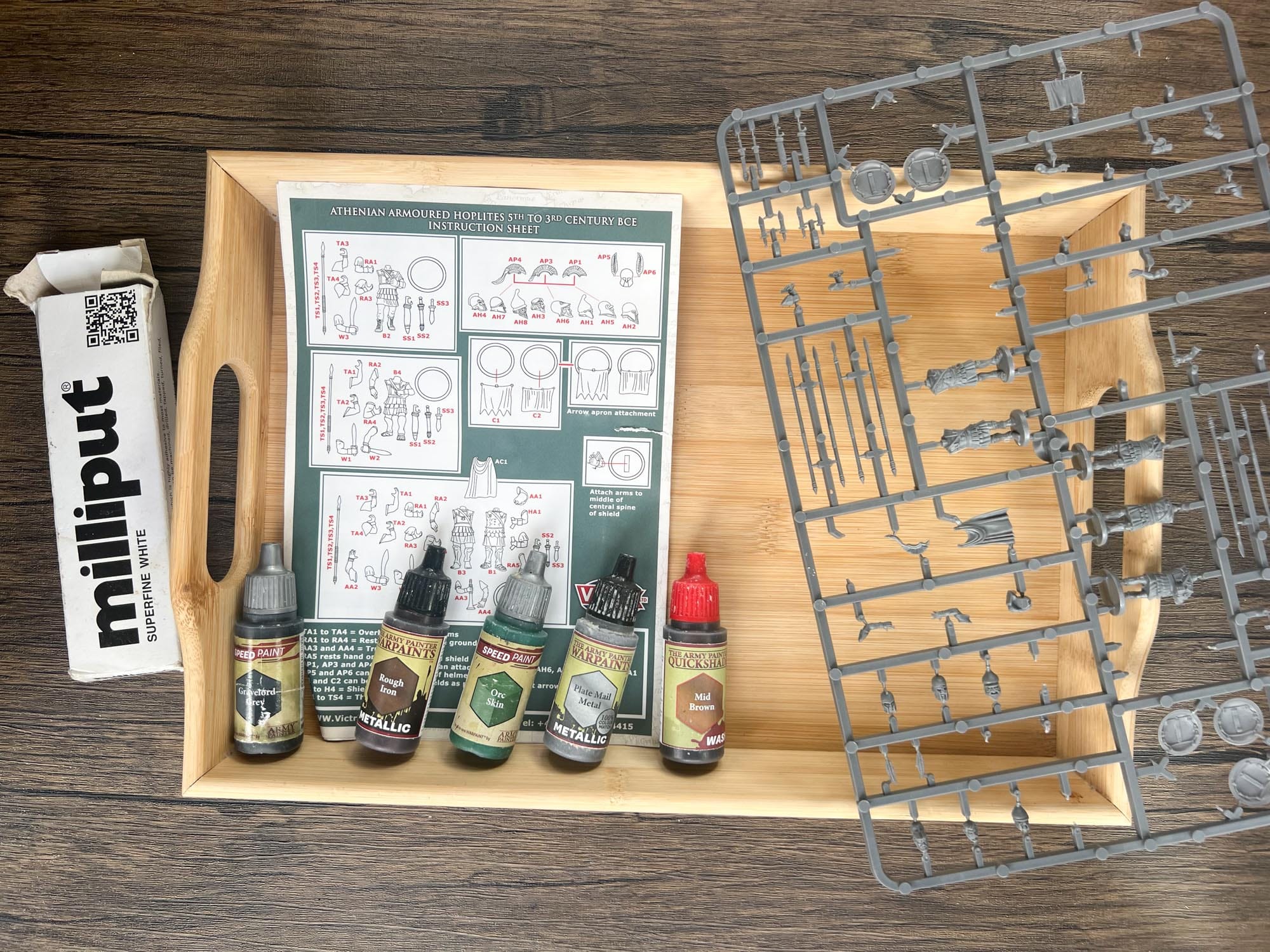
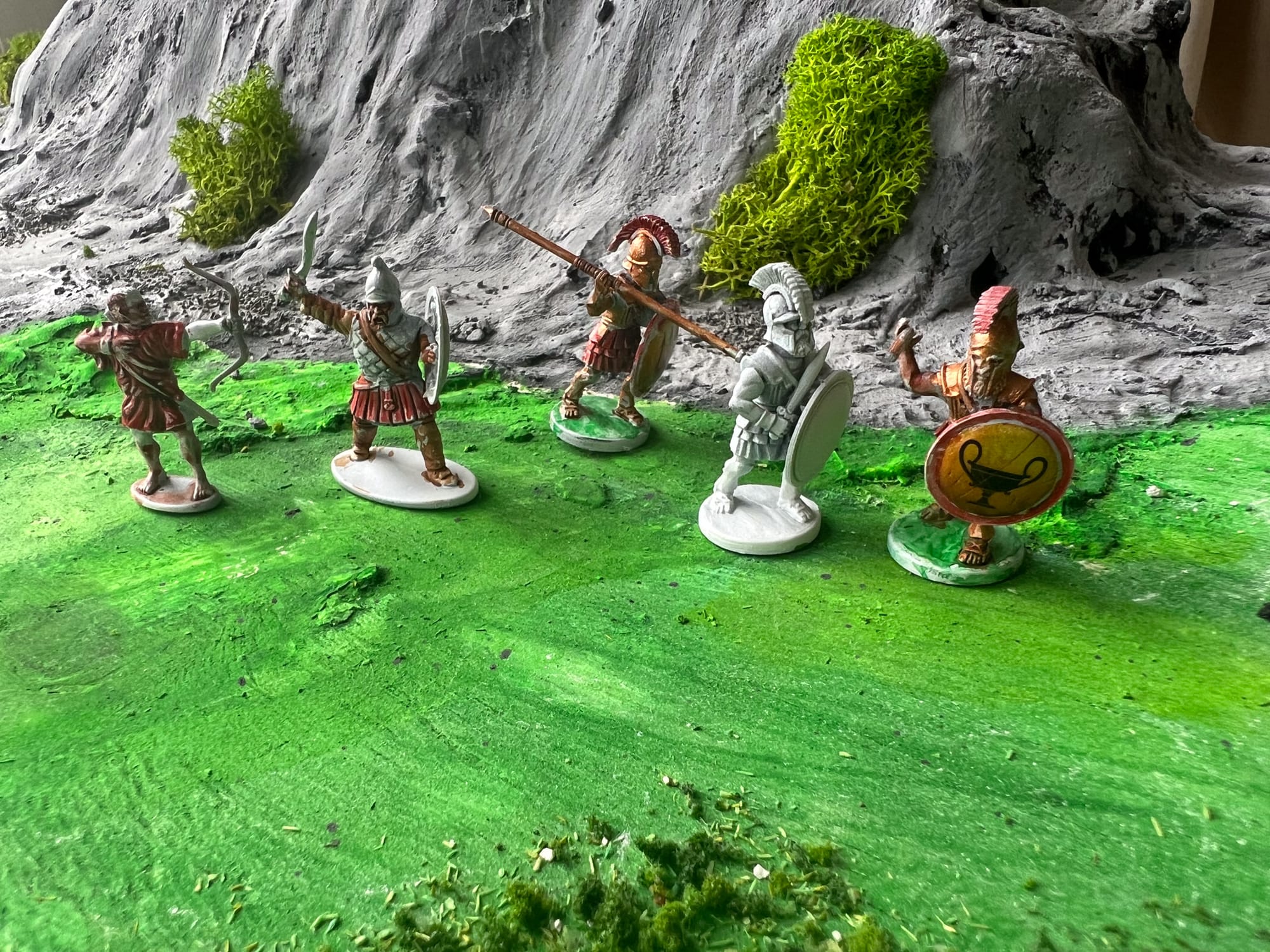
A geology kit. Six display trays, like you’d find at the Natural History Museum. It all started with a cheap bag of polished stones from the museum shop. He put them in a tinker tray and made up little cards for each, with a short description of the mineral and its properties.
If you visit our house, the museum director will take you on an extended tour... You have been warned.
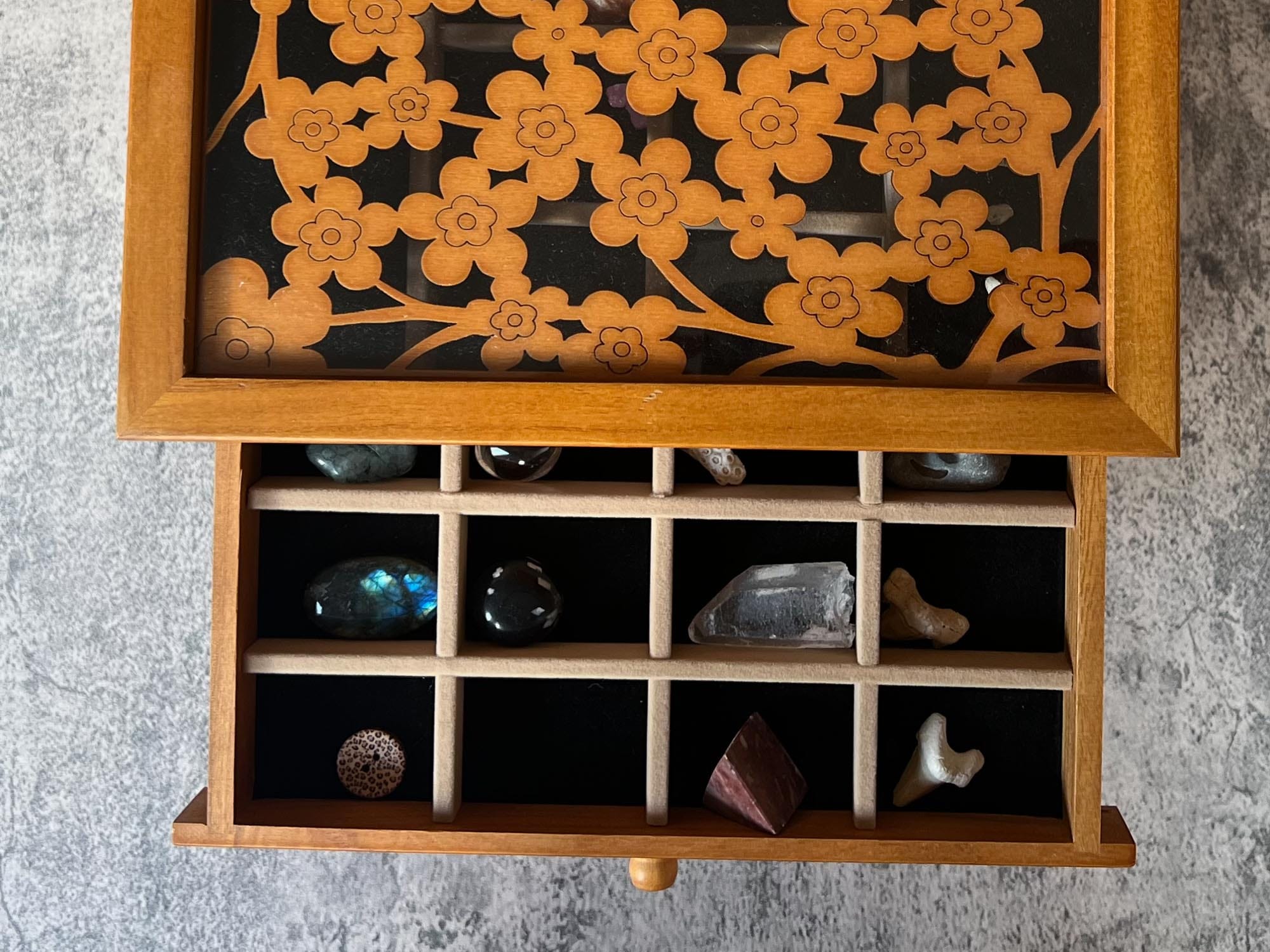
Anyway, this led to a broader interest in the subject…
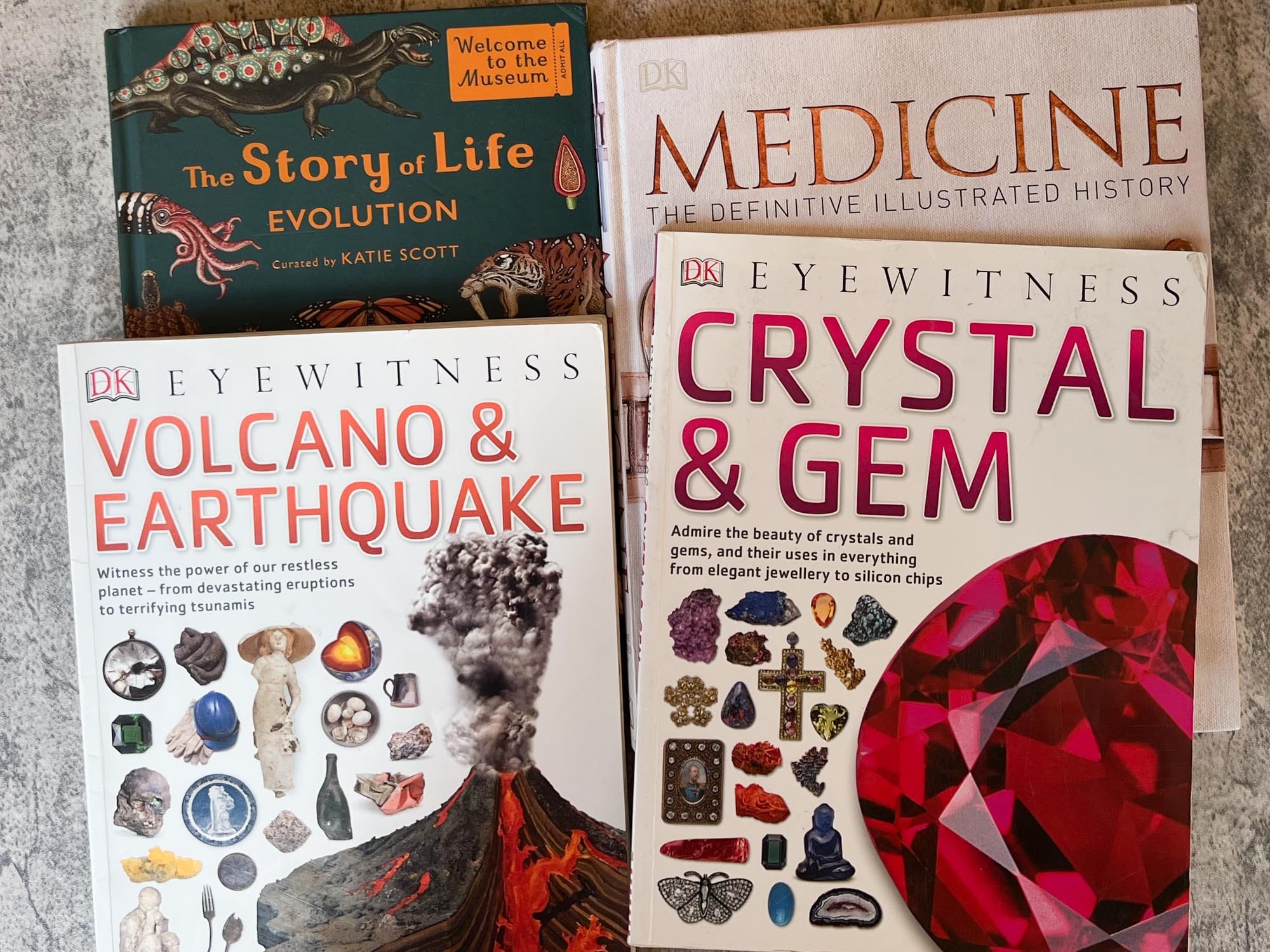
…which led to an interest in microscopes, which led to cells and the human body and medicine.
Now he wants to be a doctor.
And it all started with a small bag of shiny stones when he was six.
An electronics kit. His Christmas present was an Arduino kit. He’s busy connecting motors and sensors. Projects include a door alarm, a Lego robot and a morse code machine. This is a kit that will take in coding, engineering and lots of planning and reasoning. It’s advanced but it’s rich enough to challenge him for years to come.
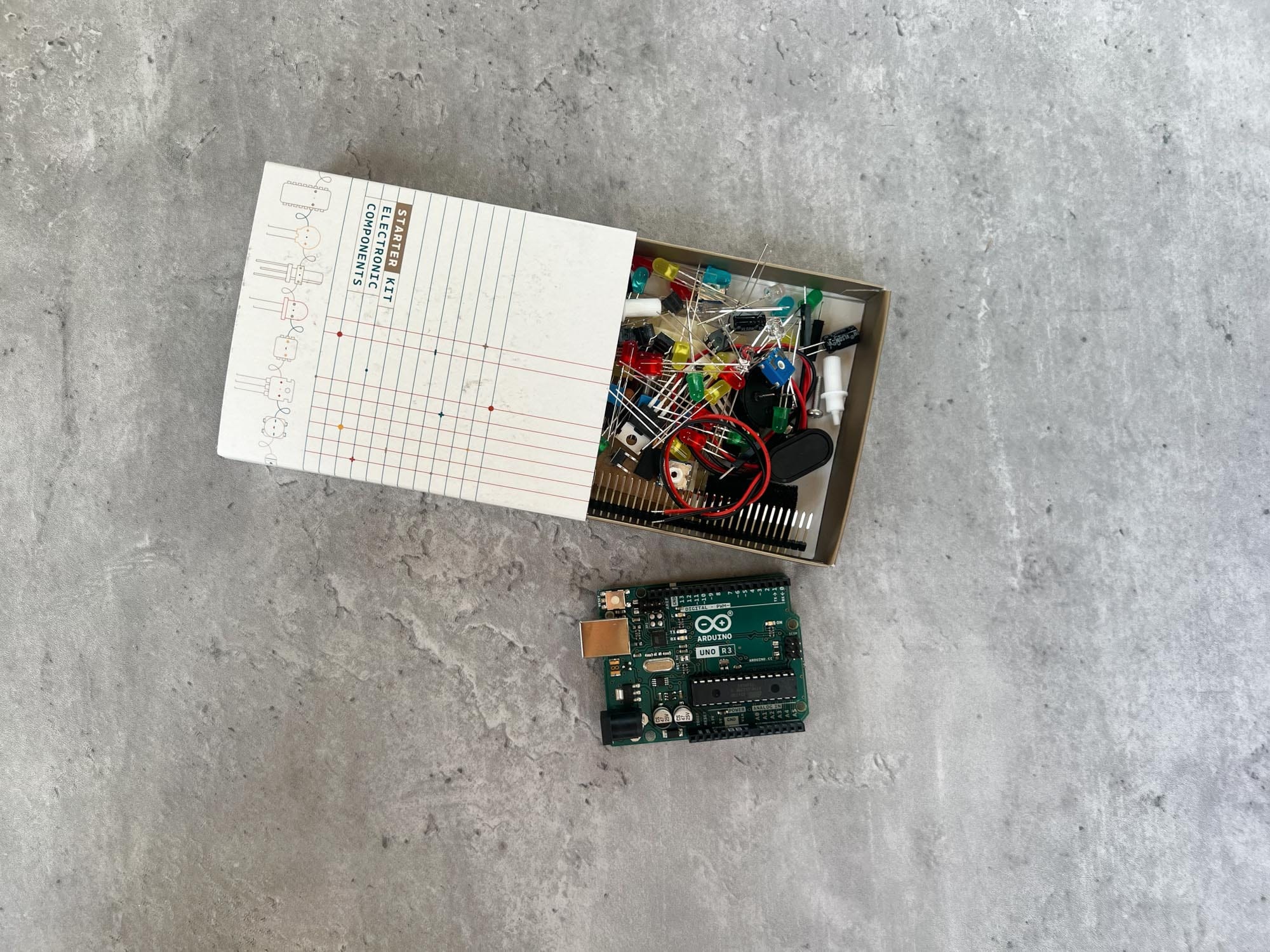
A business-in-a-box. This one’s not on the shelf. Most of it is in the fridge.
My son has invented a soft drink. His plans for a lemonade stand snowballed and became a business of his own. He’s not there yet, but he has started the website (with placeholder text, as you can see).
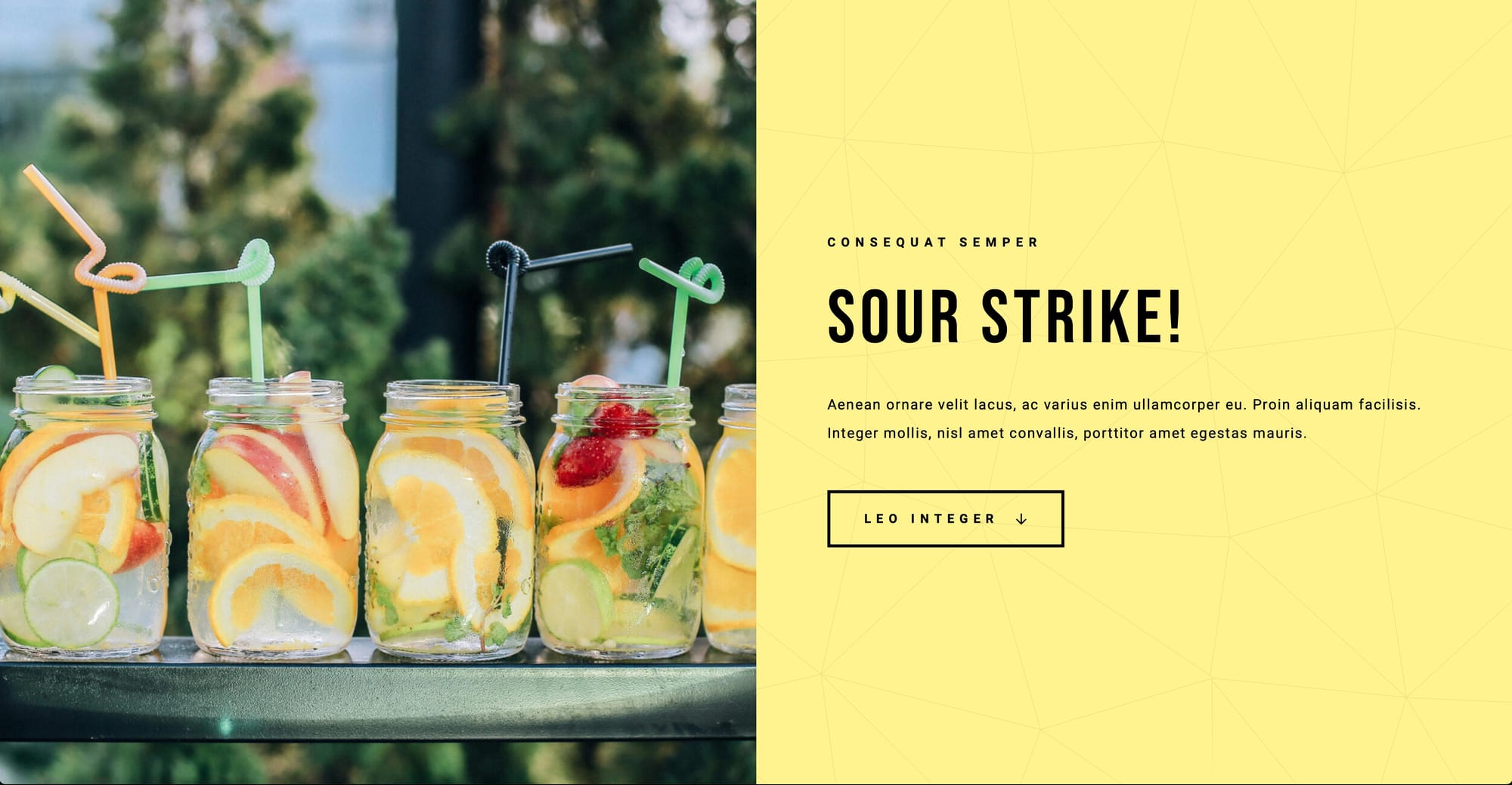
When he first expressed an interest in the project, I presented him with a tray of soft drinks, lemons, limes and sugar. He spent a happy afternoon testing combinations.
And it gave him the impetus to do more. His thoughts turned to how to brand his concoction. What would it look like?
On a recent walk, we stopped at a café where he discovered Almdudler. Could he make something as beautiful as this?
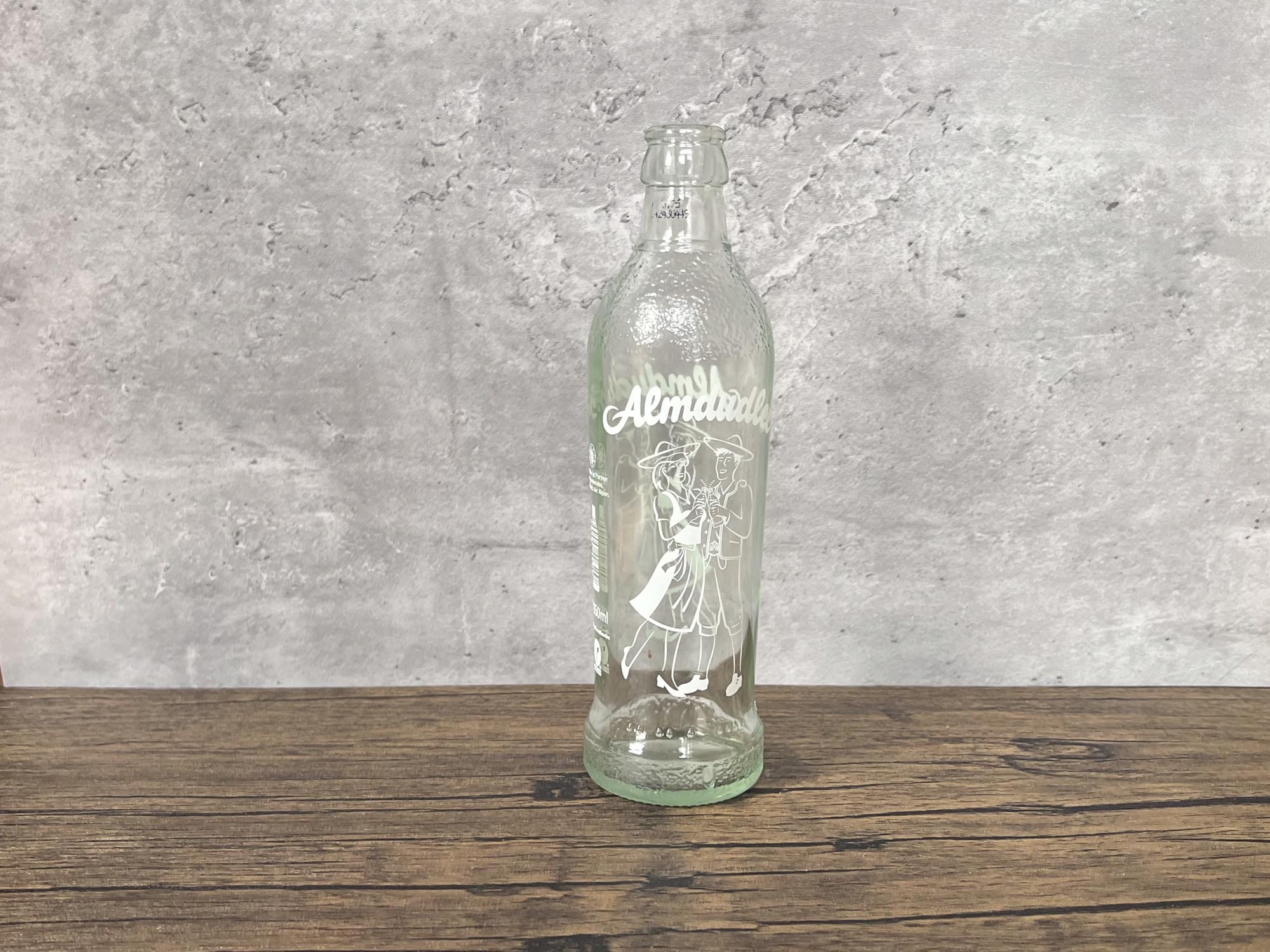
Time for a Play Kit with bottles and stickers and markers.
That’s strange. How did that tray get there? Look, there are all kinds of things for decorating bottles!
Daddy, it was you!
Of course it was. We both know it. But he doesn’t mind in the least. He’s delighted to continue the adventure.
Cue hours of fun.
Then he copied his design to Canva. A digital version was vital for printing. Next step. Next step printing labels and finishing the website.
If you’re lucky, perhaps one of your Play Kits will become a hobby. That’s the promised land. An ongoing interest, engrossing and enthusing, that continues for months or even years.
My 7-year-old daughter’s Play Kits
My youngest daughter has simpler tastes.
Like an oversized toddler, she still loves mixing things. All kinds of sensory play are welcome.
Why not join her in making a slime kit?
A slime kit
This is a perennial favourite but it’s not just about making slime - the fun comes from what follows.
I’m sure you know how to make it, but if you’d like to follow along, here’s the recipe:
- Glue (PVA or clear school glue)
- Activator
- A mixing bowl and a spoon
If you’re like me - or my daughter - you won’t measure it out. You’ll just keep pouring until it looks right - or it goes wrong and you have to throw it away! This approach can be wasteful but it’s also a great way to get a feel for how things go together and it gives you the confidence to experiment.
For added delight (and mess), you can incorporate the following:
- Paint or food dye
- Glitter
- Shaving foam (for cloud slime)
- Glow-in-the-dark glue (e.g. Elmer’s)
- Kinetic sand
- Play dough
- Baking soda (bicarbonate of soda) and vinegar
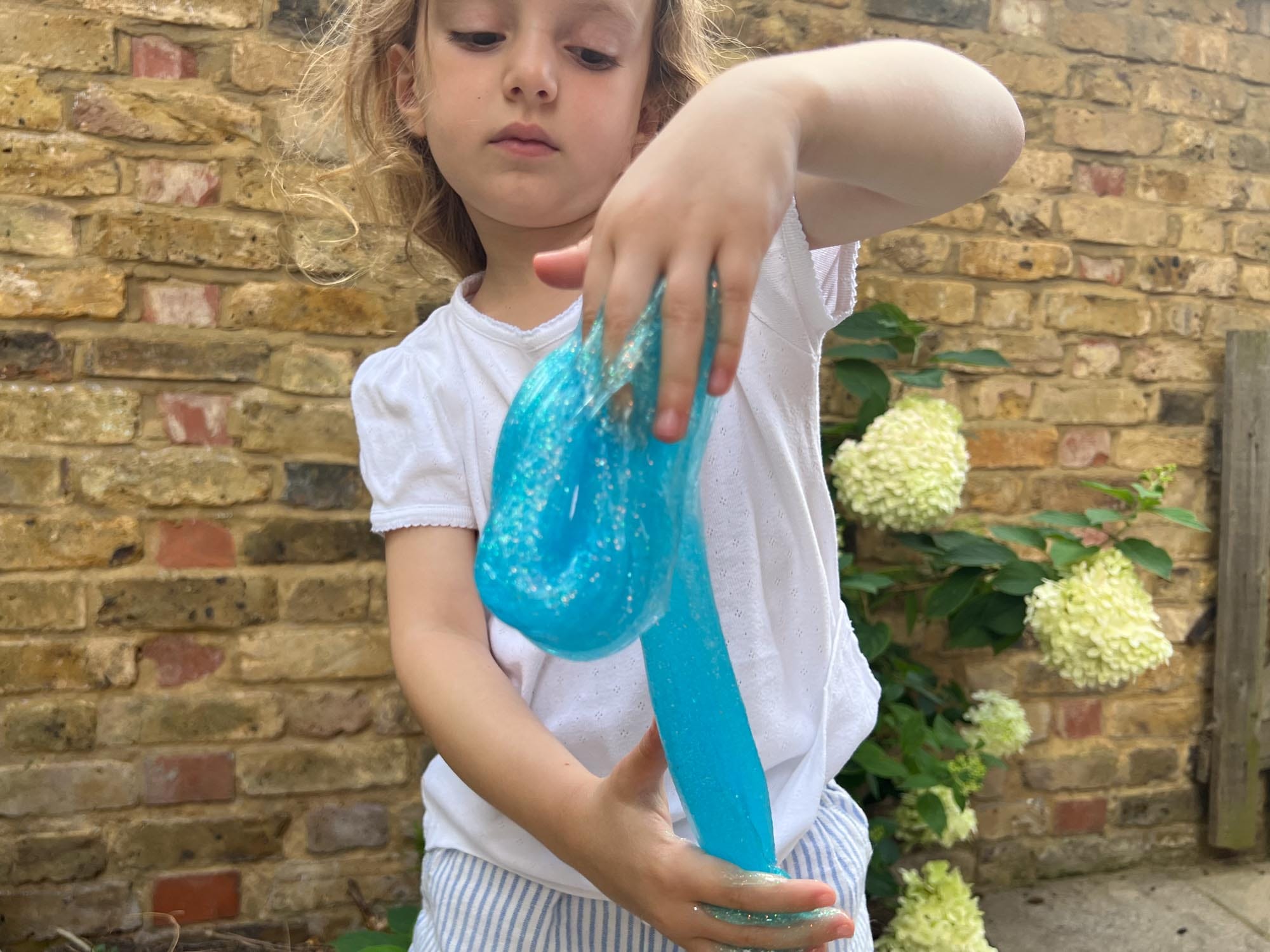
Mixing is fun but the Play Kit really comes into its own when it inspires projects.
- Offer balloons and a funnel. It won’t be long before your child discovers that she can make a DIY stress ball. These are fun - and bouncy!
- Watch a YouTube video to learn new techniques (I know, I know, we’re against screens, but sometimes they’re worth it). How about a slime lava lamp? It’s mesmerising.
My daughter has done this kind of thing so much that she now has a repertoire of questions she asks herself whenever she encounters a new material.
- Does it freeze?
- Can you squish it into a balloon or plastic bag?
- What happens if you mix your pudding into it? NOTE: She’s seven. She really should have grown out of this by now!
- What happens if you hide it in your pocket and drop it into the bath at bath time?
What a bandit!
A Posca pen kit
What would your child do if she came to the kitchen table to find a tray full of Posca pens and pebbles?
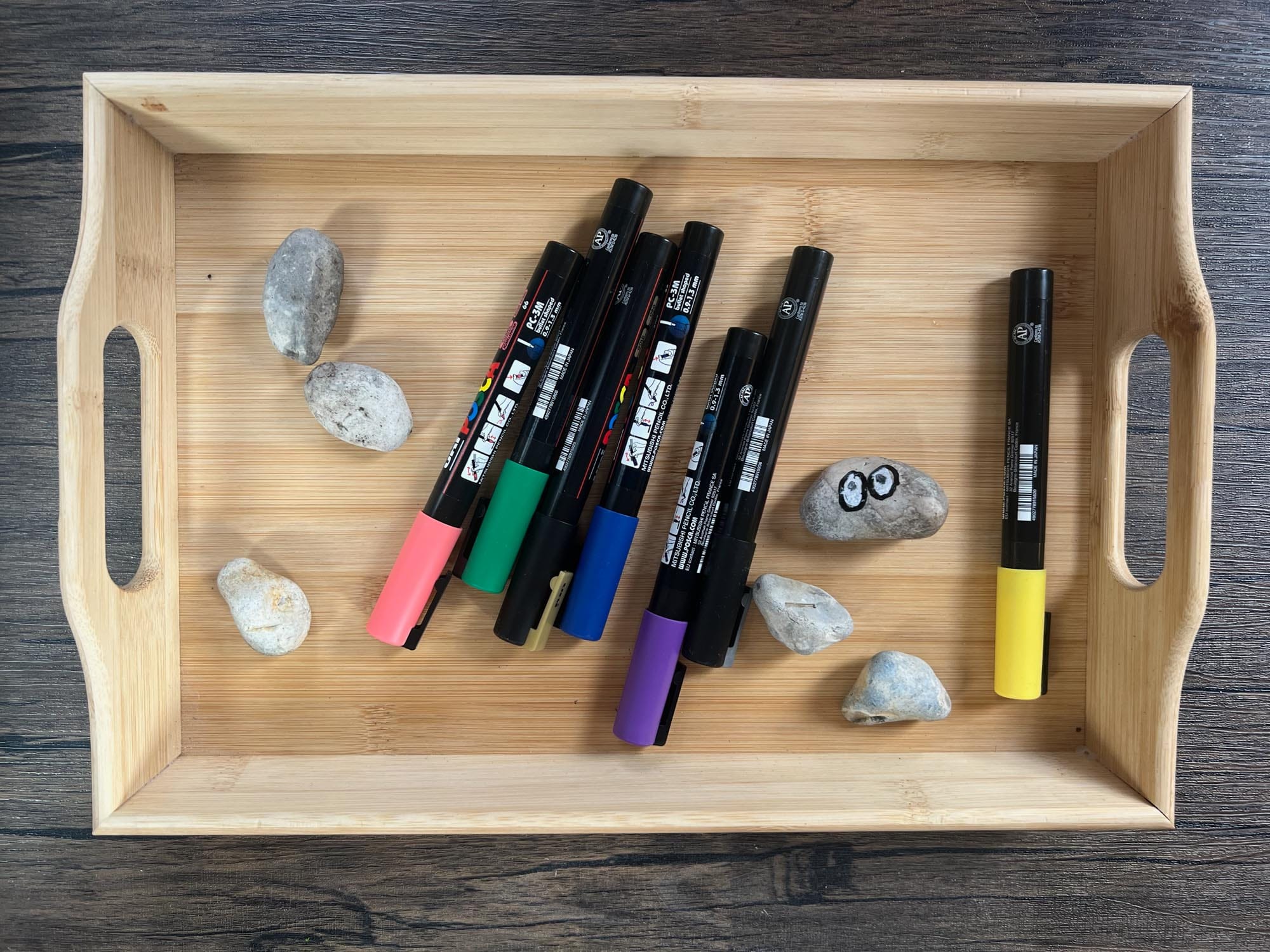
This isn’t a Montessori tray. There is no right answer.
And that’s what makes it so appealing to older children.
My seven-year-old saw the pebbles and started drawing faces. But it wasn’t long before her mind turned to colouring other things.
Daddy, this says it’s a fabric pen. Can I draw on my t-shirt?
Can I draw on the window?
You can see her thinking, How far can I push this?
Nails were painted. But I drew the line at eyebrows!
These pens get a lot of use. But the direction of travel may surprise you.
I had shown her one of the features of my new toy project, Cosmos, and how it incorporates craft materials into block play. And this is what inspired her. The badly-drawn trees are mine but she saw the potential of making her own scenery stand up using just a bulldog clip and a plain index card because the pens offered such solid, saturated colours.
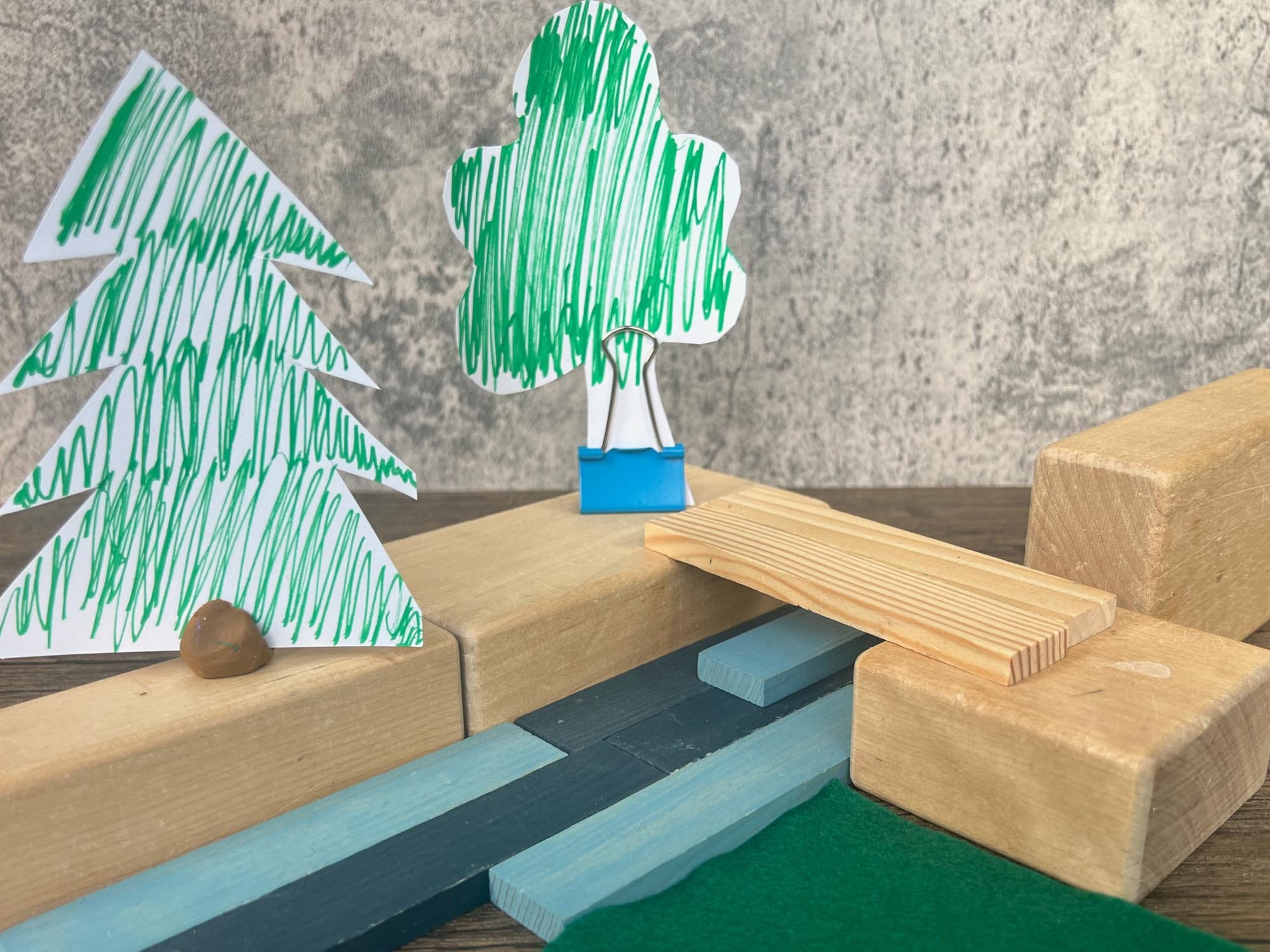
So her next Play Kit looked like this:
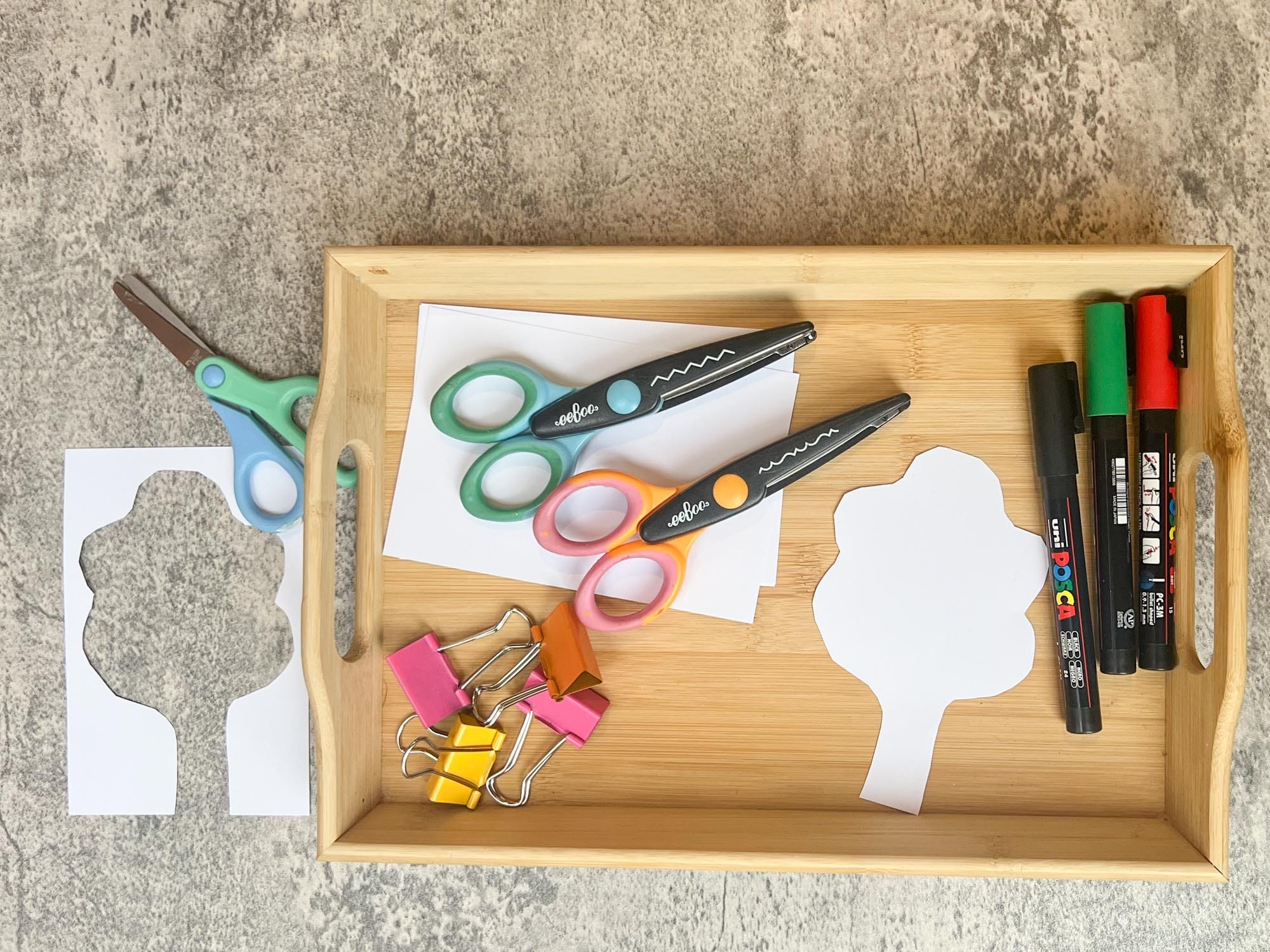
How long do you think it took her to spot the potential of those eeBoo crinkly scissors? They’re perfect for trees.
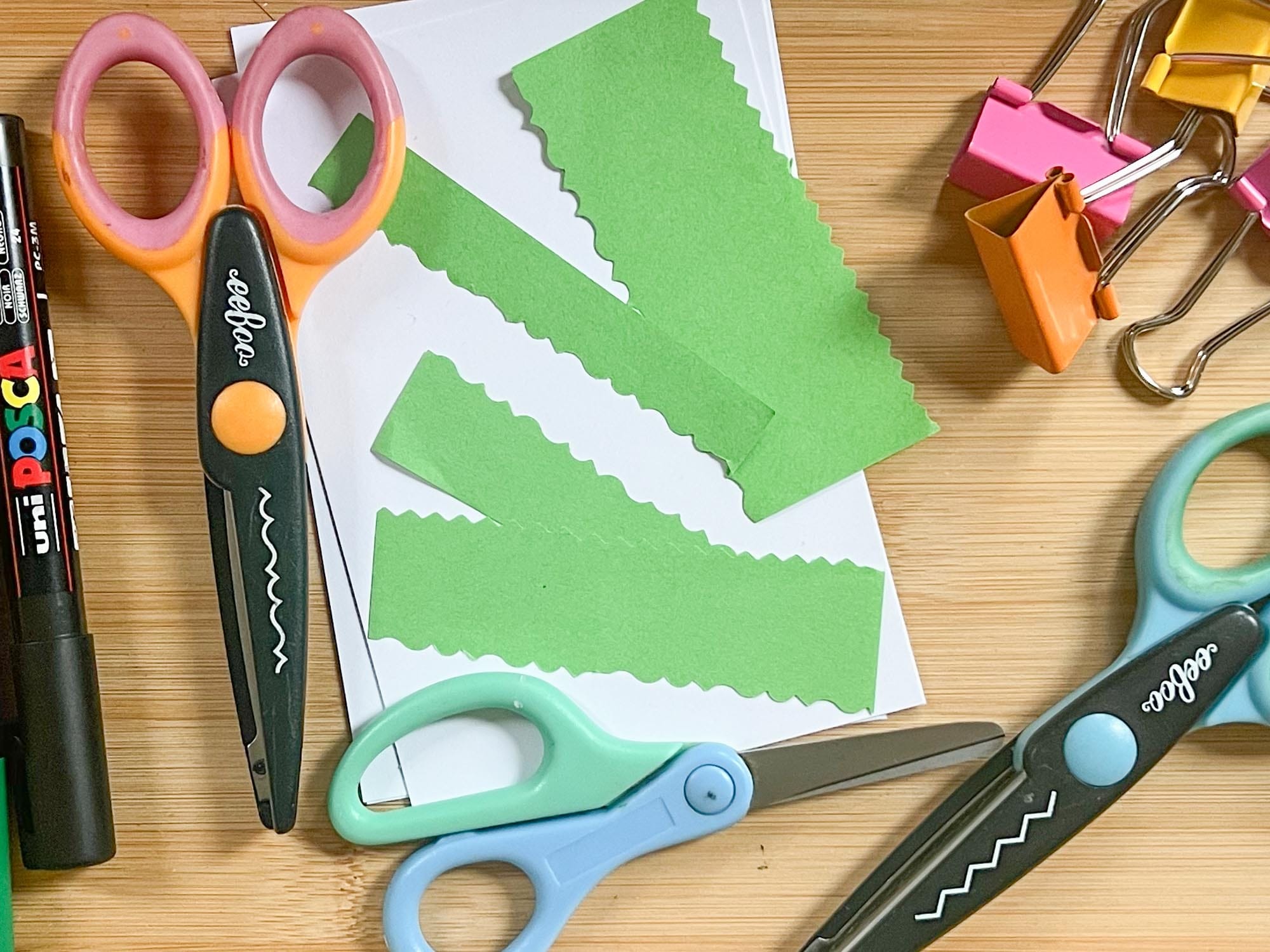
A few days later, the kit was out again. And this time, mysteriously, an owl had appeared and some split pins.
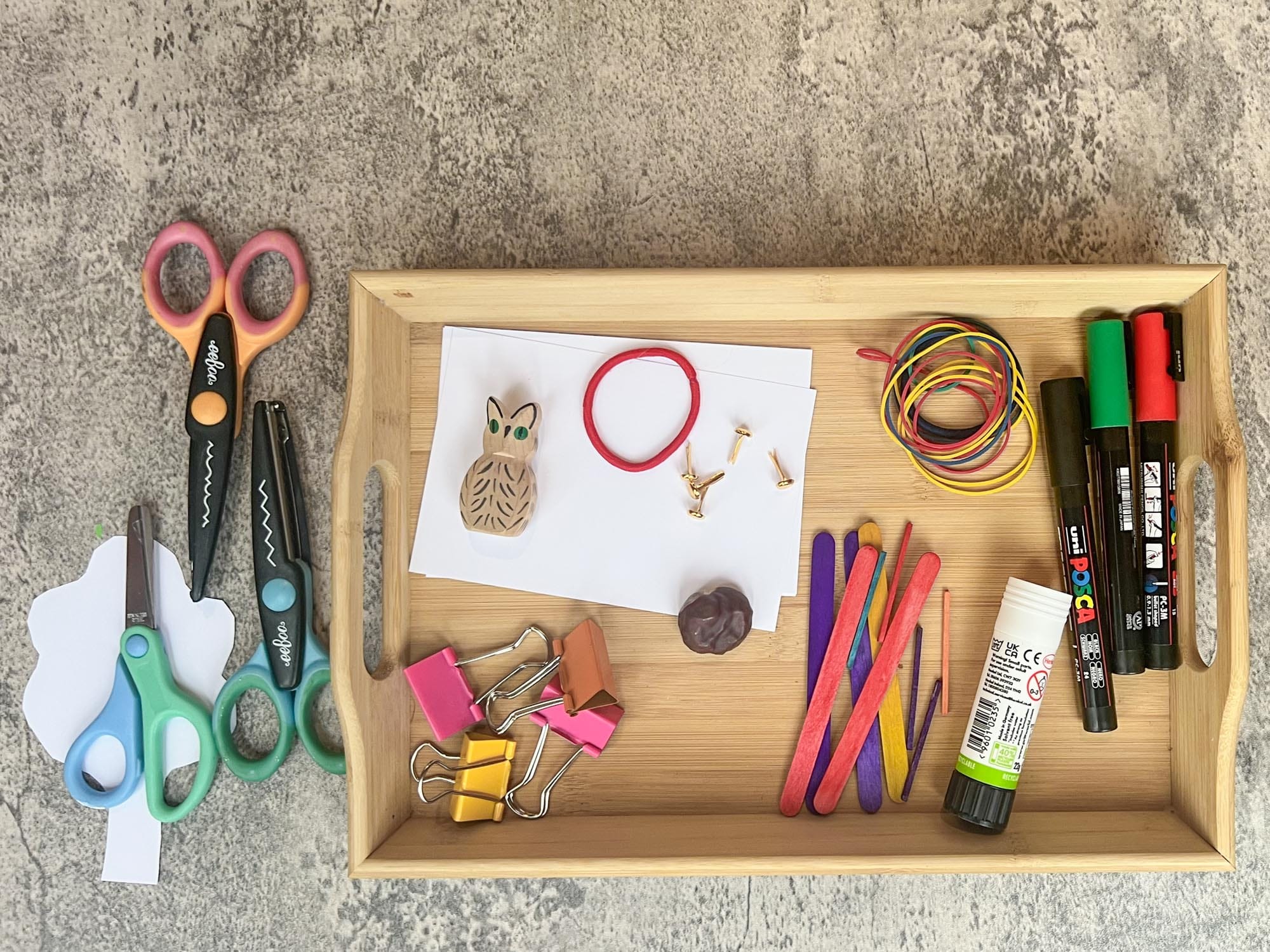
Where is this going?
I don’t care.
This kit keeps her busy for hours at a time. And when inspiration strikes, she goes to the craft trolley or the kitchen cupboard to find what she needs.
She has self-efficacy. She believes in herself. And that’s the best gift I can give her.
Encourage your child to build her own kits
One of the best things about play kits is that they grow with your child - not just in terms of skills but in ownership. At first, you might set up the kits yourself, arranging materials neatly like a Montessori tray.
But over time, your child can start adding to her kits or even creating new ones.
She develops self-efficacy, the belief that she is master of her own destiny.
Which is great because then she’ll stop pestering you for the television…
Building the kit week by week
We want our Play Kits to offer an appealing alternative to screens, something our children can’t wait to return to.
The trouble comes when the kit becomes predictable. Once you’ve explored all the possibilities, the fun quickly fades.
The answer, of course, is to keep it fresh.
What could you add to your Play Kit to keep your child coming back?
Like adding tomatoes to carrots, celery and onion, adding a small light to my son’s wargaming board brought the whole thing to life in unexpected ways.
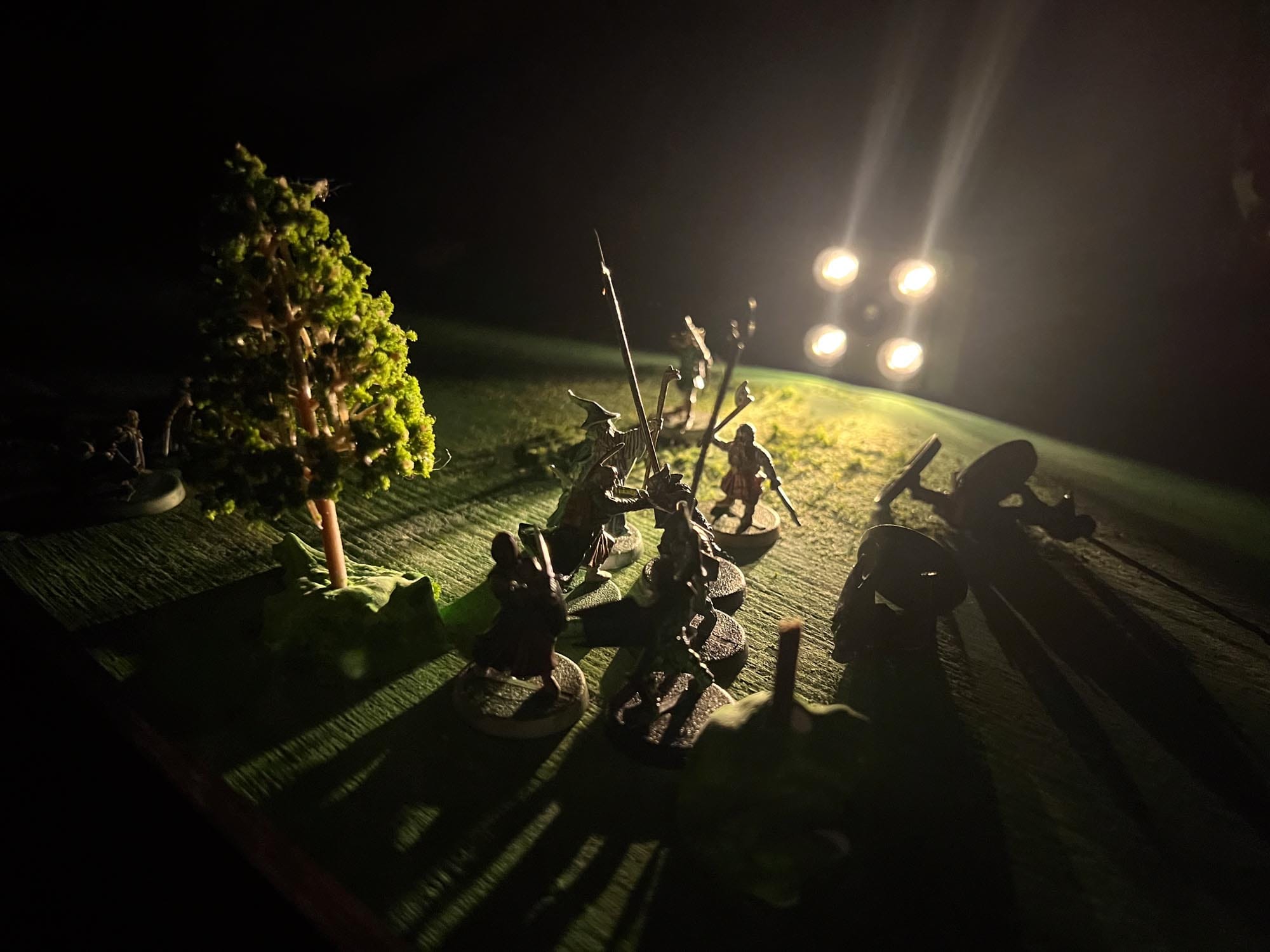
The best additions are simple. You can revive an embroidery kit by adding pre-printed embroidery cards one week and more open-ended binca the next. Later, introduce buttons and beads. In week four you might teach a cross stitch. Be guided by your child’s interests. Rather than deciding for her, look for different kinds of embroidery in everyday life. She might be inspired.

My daughters took this project in a completely different direction after seeing a felt Christmas decoration craft kit. Embroidery became sewing, flat shapes became three-dimensional. We bought stuffing (though cotton wool would have worked just fine) and a production line was set up, making Christmas gifts for friends.
I could never have predicted that when I first presented a cheap embroidery card from Flying Tiger.
Turn on your radar and pay attention.
Notice what your child says and does.
Start with the child.
Key points
- Your child needs the time and space to work through ideas by herself.
- You need a break.
- It’s tempting to offer screens because they’re guaranteed to entertain.
- But screens are experience blockers. They sap creativity and motivation. And they make us grumpy.
- The solution is to make play the easy and obvious choice.
- Nudge your child towards play and away from screens.
- Establish habits that make play inevitable.
- Create Play Kits and a playspace to make play more fun than screens.
- Sit back and watch your child become a creative self-starter who makes her own fun.
Final word
Your child is bored.
For a moment, she is tempted to ask for a device.
But then she sees the bookshelf and is drawn to something she made.
It’s a self-contained activity in a box.
Better yet, an hour in a box.
An hour in a box that’s so interesting she will choose it over screens.
Play Kits work because they’re based on your child’s interests and they start at a level she can work at independently.
Over the course of just a few afternoons, you can fill a shelf with ready-to-go projects.
And, almost effortlessly, you’ve set your child up for a habit of exploration and self-directed learning.
It’s a habit that will pay rich dividends for the rest of her life.
The shelves are a visible reminder that there’s fun to be had. They are the perfect nudge.
They make independent play inevitable.
How to get started today
You don’t need expensive materials or a Pinterest-perfect setup. Start small:
🎯 Grab a container - a box, a tray, or a basket.
🎯 Fill it with open-ended materials your child already loves.
🎯 Add one new or interesting thing.
🎯 Place it in an accessible spot and step back.
Watch what happens.
I don’t know about you but I’ve had enough of screens.
What will your first play kit be?
Happy playing!
Alexis



Comments ()